Jinbo Chen
A 97 fJ/Conversion Neuron-ADC with Reconfigurable Sampling and Static Power Reduction
Nov 28, 2022Abstract:A bio-inspired Neuron-ADC with reconfigurable sampling and static power reduction for biomedical applications is proposed in this work. The Neuron-ADC leverages level-crossing sampling and a bio-inspired refractory circuit to compressively converts bio-signal to digital spikes and information-of-interest. The proposed design can not only avoid dissipating ADC energy on unnecessary data but also achieve reconfigurable sampling, making it appropriate for either low power operation or high accuracy conversion when dealing with various kinds of bio-signals. Moreover, the proposed dynamic comparator can reduce static power up to 41.1% when tested with a 10 kHz sinusoidal input. Simulation results of 40 nm CMOS process show that the Neuron-ADC achieves a maximum ENOB of 6.9 bits with a corresponding FoM of 97 fJ/conversion under 0.6 V supply voltage.
Recent Trends and Future Prospects of Neural Recording Circuits and Systems: A Tutorial Brief
May 27, 2022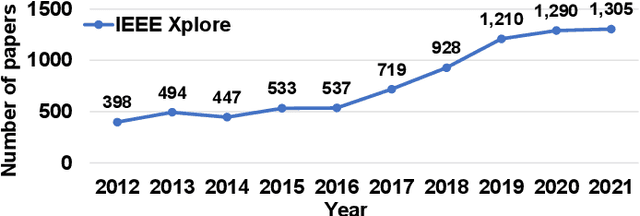
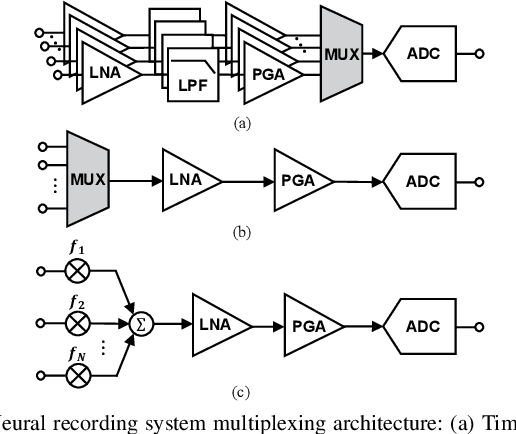
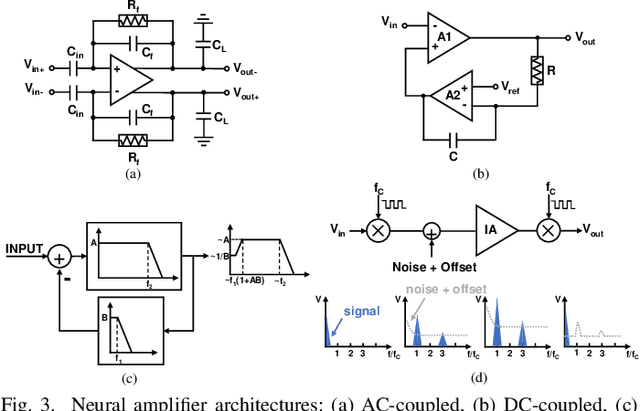
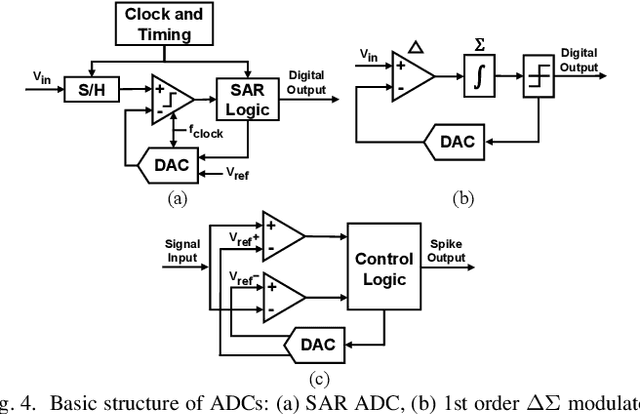
Abstract:Recent years have seen fast advances in neural recording circuits and systems as they offer a promising way to investigate real-time brain monitoring and the closed-loop modulation of psychological disorders and neurodegenerative diseases. In this context, this tutorial brief presents a concise overview of concepts and design methodologies of neural recording, highlighting neural signal characteristics, system-level specifications and architectures, circuit-level implementation, and noise reduction techniques. Future trends and challenges of neural recording are finally discussed.
An Event-Driven Compressive Neuromorphic System for Cardiac Arrhythmia Detection
May 26, 2022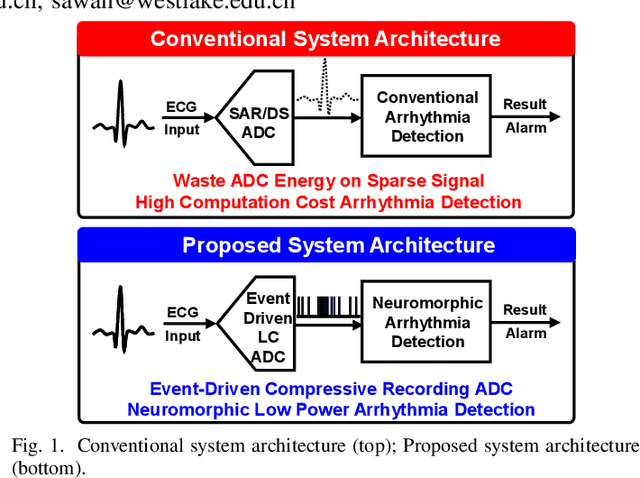
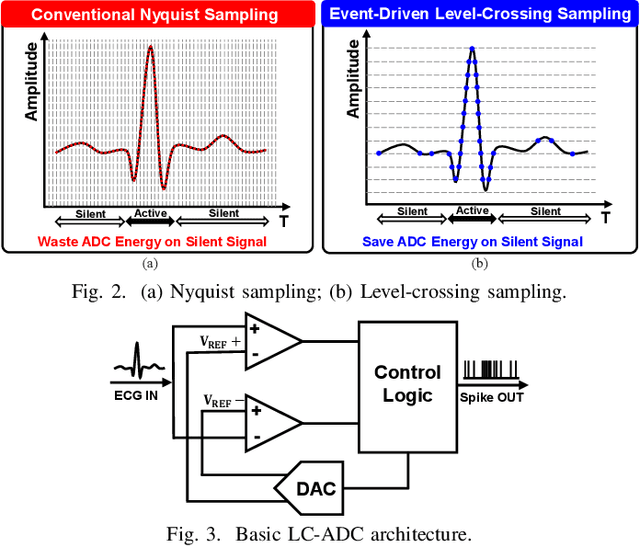

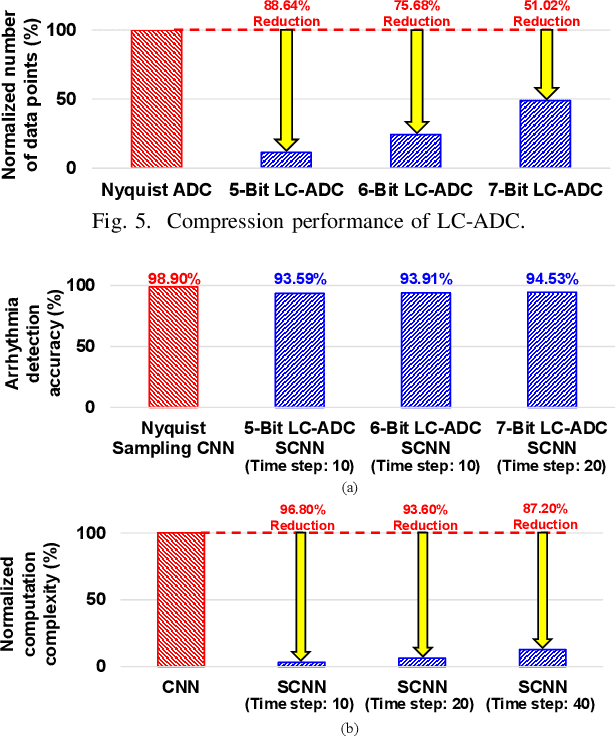
Abstract:Wearable electrocardiograph (ECG) recording and processing systems have been developed to detect cardiac arrhythmia to help prevent heart attacks. Conventional wearable systems, however, suffer from high energy consumption at both circuit and system levels. To overcome the design challenges, this paper proposes an event-driven compressive ECG recording and neuromorphic processing system for cardiac arrhythmia detection. The proposed system achieves low power consumption and high arrhythmia detection accuracy via system level co-design with spike-based information representation. Event-driven level-crossing ADC (LC-ADC) is exploited in the recording system, which utilizes the sparsity of ECG signal to enable compressive recording and save ADC energy during the silent signal period. Meanwhile, the proposed spiking convolutional neural network (SCNN) based neuromorphic arrhythmia detection method is inherently compatible with the spike-based output of LC-ADC, hence realizing accurate detection and low energy consumption at system level. Simulation results show that the proposed system with 5-bit LC-ADC achieves 88.6\% reduction of sampled data points compared with Nyquist sampling in the MIT-BIH dataset, and 93.59\% arrhythmia detection accuracy with SCNN, demonstrating the compression ability of LC-ADC and the effectiveness of system level co-design with SCNN.
RFMask: A Simple Baseline for Human Silhouette Segmentation with Radio Signals
Jan 25, 2022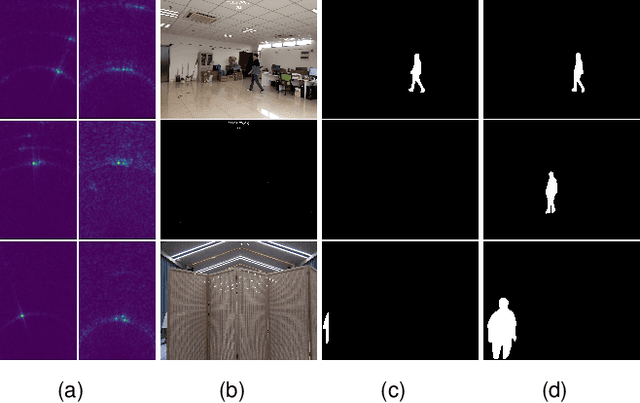
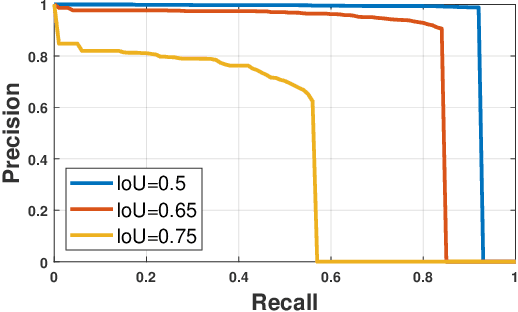
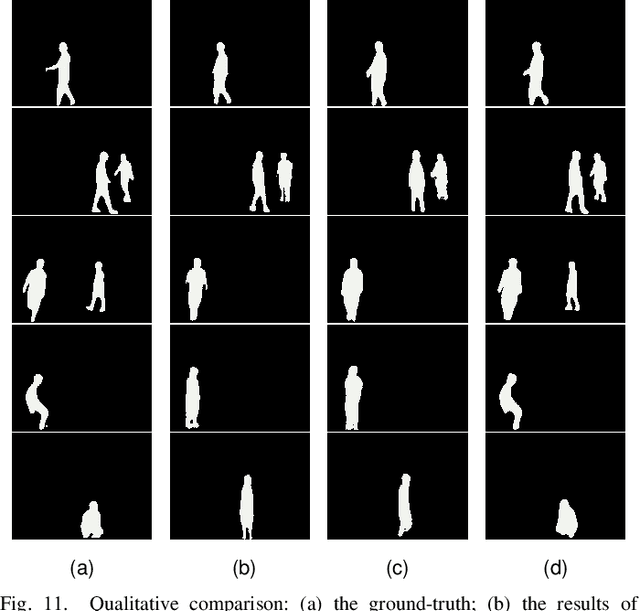

Abstract:Human silhouette segmentation, which is originally defined in computer vision, has achieved promising results for understanding human activities. However, the physical limitation makes existing systems based on optical cameras suffer from severe performance degradation under low illumination, smoke, and/or opaque obstruction conditions. To overcome such limitations, in this paper, we propose to utilize the radio signals, which can traverse obstacles and are unaffected by the lighting conditions to achieve silhouette segmentation. The proposed RFMask framework is composed of three modules. It first transforms RF signals captured by millimeter wave radar on two planes into spatial domain and suppress interference with the signal processing module. Then, it locates human reflections on RF frames and extract features from surrounding signals with human detection module. Finally, the extracted features from RF frames are aggregated with an attention based mask generation module. To verify our proposed framework, we collect a dataset containing 804,760 radio frames and 402,380 camera frames with human activities under various scenes. Experimental results show that the proposed framework can achieve impressive human silhouette segmentation even under the challenging scenarios(such as low light and occlusion scenarios) where traditional optical-camera-based methods fail. To the best of our knowledge, this is the first investigation towards segmenting human silhouette based on millimeter wave signals. We hope that our work can serve as a baseline and inspire further research that perform vision tasks with radio signals. The dataset and codes will be made in public.
Multi-Person Passive WiFi Indoor Localization with Intelligent Reflecting Surface
Jan 05, 2022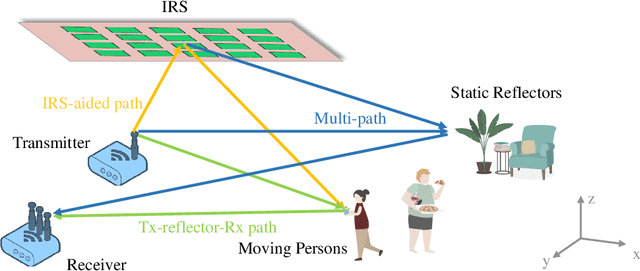

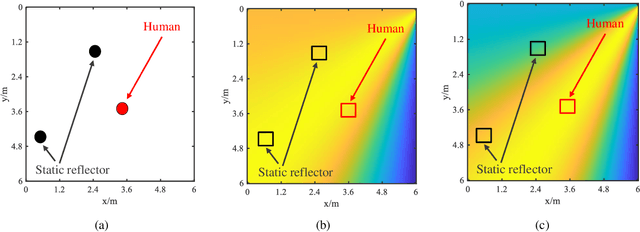
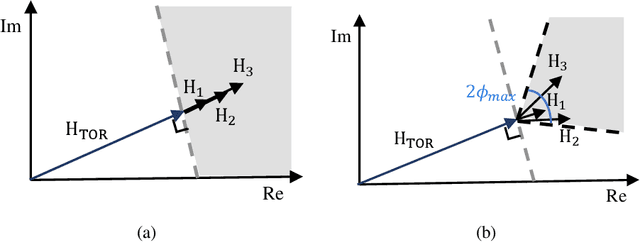
Abstract:The past years have witnessed increasing research interest in achieving passive human localization with commodity WiFi devices. However, due to the fundamental limited spatial resolution of WiFi signals, it is still very difficult to achieve accurate localization with existing commodity WiFi devices. To tackle this problem, in this paper, we propose to exploit the degree of freedom provided by the Intelligent Reflecting Surface (IRS), which is composed of a large number of controllable reflective elements, to modulate the spatial distribution of WiFi signals and thus break down the spatial resolution limitation of WiFi signals to achieve accurate localization. Specifically, in the single-person scenario, we derive the closed-form solution to optimally control the phase shift of the IRS elements. In the multi-person scenario, we propose a Side-lobe Cancellation Algorithm to eliminate the near-far effect to achieve accurate localization of multiple persons in an iterative manner. Extensive simulation results demonstrate that without any change to the existing WiFi infrastructure, the proposed framework can locate multiple moving persons passively with sub-centimeter accuracy under multipath interference and random noise.
Contactless Electrocardiogram Monitoring with Millimeter Wave Radar
Dec 21, 2021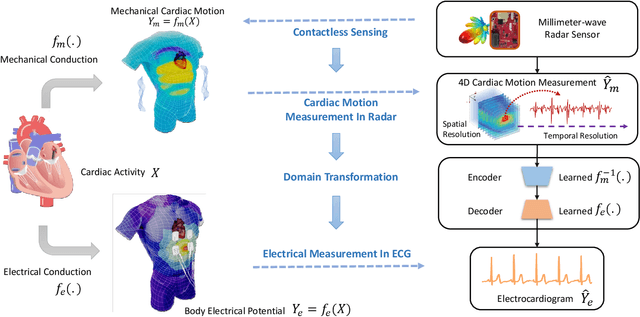
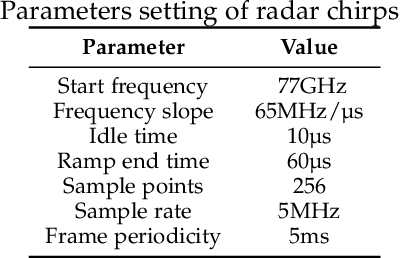

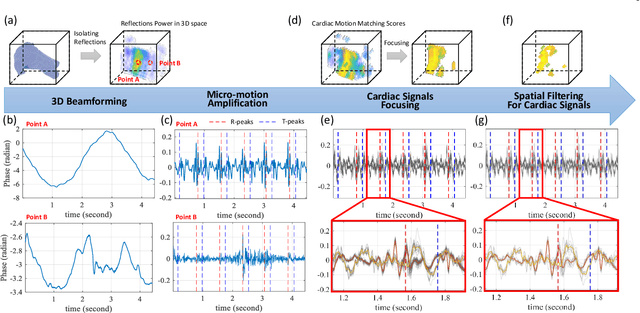
Abstract:The electrocardiogram (ECG) has always been an important biomedical test to diagnose cardiovascular diseases. Current approaches for ECG monitoring are based on body attached electrodes leading to uncomfortable user experience. Therefore, contactless ECG monitoring has drawn tremendous attention, which however remains unsolved. In fact, cardiac electrical-mechanical activities are coupling in a well-coordinated pattern. In this paper, we achieve contactless ECG monitoring by breaking the boundary between the cardiac mechanical and electrical activity. Specifically, we develop a millimeter-wave radar system to contactlessly measure cardiac mechanical activity and reconstruct ECG without any contact in. To measure the cardiac mechanical activity comprehensively, we propose a series of signal processing algorithms to extract 4D cardiac motions from radio frequency (RF) signals. Furthermore, we design a deep neural network to solve the cardiac related domain transformation problem and achieve end-to-end reconstruction mapping from RF input to the ECG output. The experimental results show that our contactless ECG measurements achieve timing accuracy of cardiac electrical events with median error below 14ms and morphology accuracy with median Pearson-Correlation of 90% and median Root-Mean-Square-Error of 0.081mv compared to the groudtruth ECG. These results indicate that the system enables the potential of contactless, continuous and accurate ECG monitoring.
Towards Domain-Independent and Real-Time Gesture Recognition Using mmWave Signal
Nov 11, 2021
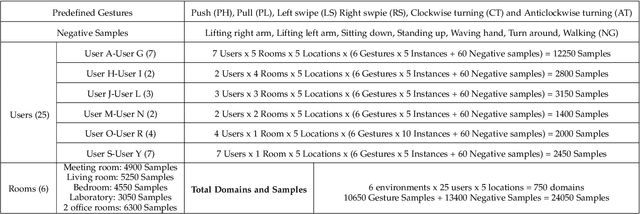

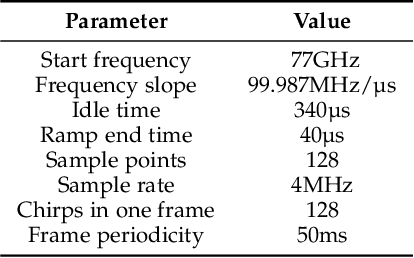
Abstract:Human gesture recognition using millimeter wave (mmWave) signals provides attractive applications including smart home and in-car interface. While existing works achieve promising performance under controlled settings, practical applications are still limited due to the need of intensive data collection, extra training efforts when adapting to new domains (i.e. environments, persons and locations) and poor performance for real-time recognition. In this paper, we propose DI-Gesture, a domain-independent and real-time mmWave gesture recognition system. Specifically, we first derive the signal variation corresponding to human gestures with spatial-temporal processing. To enhance the robustness of the system and reduce data collecting efforts, we design a data augmentation framework based on the correlation between signal patterns and gesture variations. Furthermore, we propose a dynamic window mechanism to perform gesture segmentation automatically and accurately, thus enable real-time recognition. Finally, we build a lightweight neural network to extract spatial-temporal information from the data for gesture classification. Extensive experimental results show DI-Gesture achieves an average accuracy of 97.92%, 99.18% and 98.76% for new users, environments and locations, respectively. In real-time scenario, the accuracy of DI-Gesutre reaches over 97% with average inference time of 2.87ms, which demonstrates the superior robustness and effectiveness of our system.
 Add to Chrome
Add to Chrome Add to Firefox
Add to Firefox Add to Edge
Add to Edge